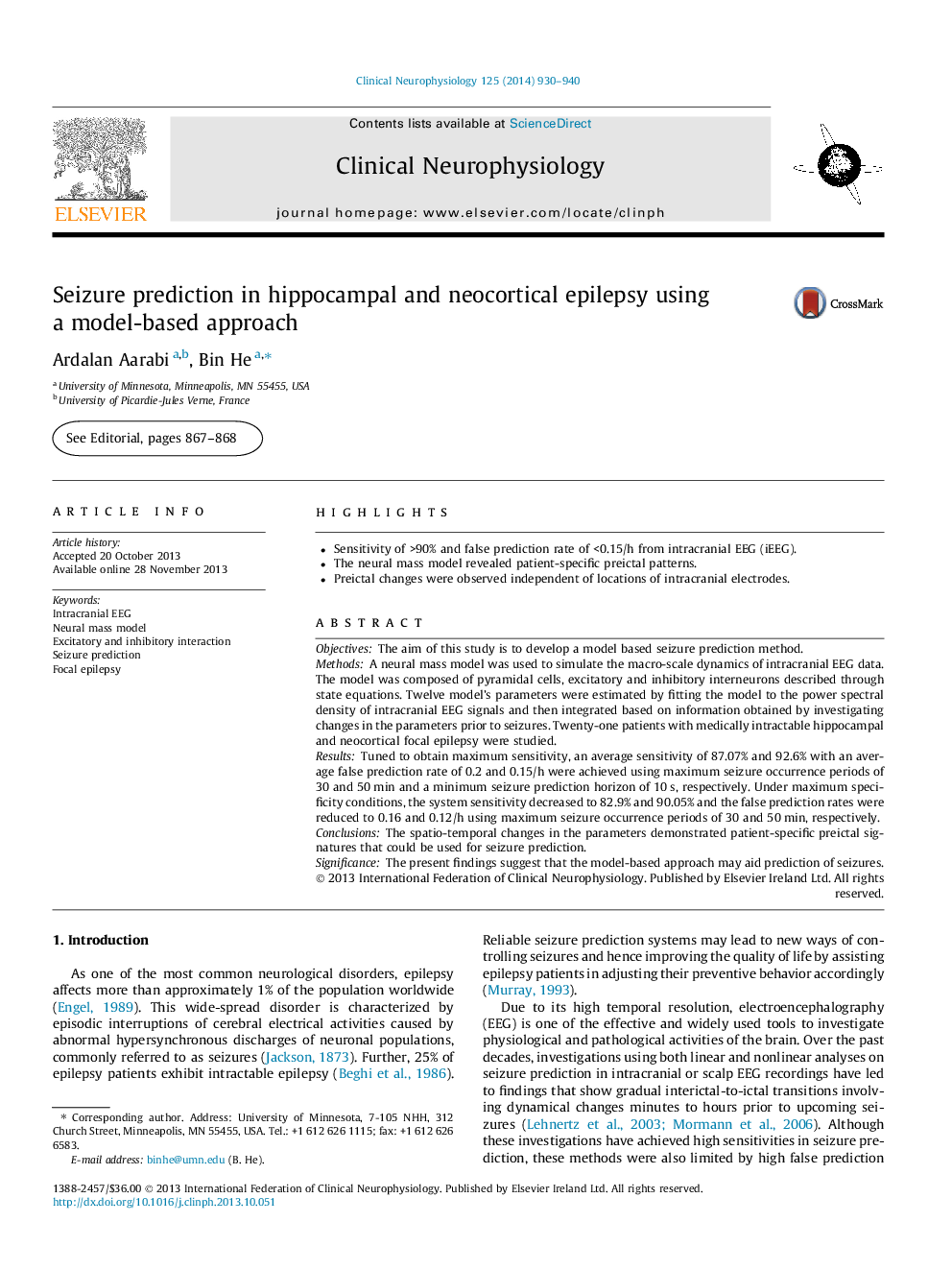| Article ID | Journal | Published Year | Pages | File Type |
|---|---|---|---|---|
| 3044076 | Clinical Neurophysiology | 2014 | 11 Pages |
•Sensitivity of >90% and false prediction rate of <0.15/h from intracranial EEG (iEEG).•The neural mass model revealed patient-specific preictal patterns.•Preictal changes were observed independent of locations of intracranial electrodes.
ObjectivesThe aim of this study is to develop a model based seizure prediction method.MethodsA neural mass model was used to simulate the macro-scale dynamics of intracranial EEG data. The model was composed of pyramidal cells, excitatory and inhibitory interneurons described through state equations. Twelve model’s parameters were estimated by fitting the model to the power spectral density of intracranial EEG signals and then integrated based on information obtained by investigating changes in the parameters prior to seizures. Twenty-one patients with medically intractable hippocampal and neocortical focal epilepsy were studied.ResultsTuned to obtain maximum sensitivity, an average sensitivity of 87.07% and 92.6% with an average false prediction rate of 0.2 and 0.15/h were achieved using maximum seizure occurrence periods of 30 and 50 min and a minimum seizure prediction horizon of 10 s, respectively. Under maximum specificity conditions, the system sensitivity decreased to 82.9% and 90.05% and the false prediction rates were reduced to 0.16 and 0.12/h using maximum seizure occurrence periods of 30 and 50 min, respectively.ConclusionsThe spatio-temporal changes in the parameters demonstrated patient-specific preictal signatures that could be used for seizure prediction.SignificanceThe present findings suggest that the model-based approach may aid prediction of seizures.
